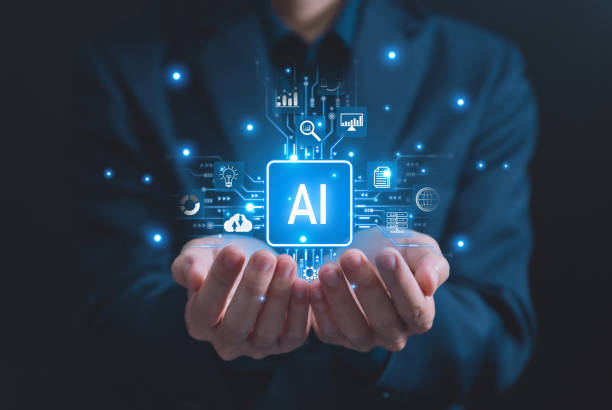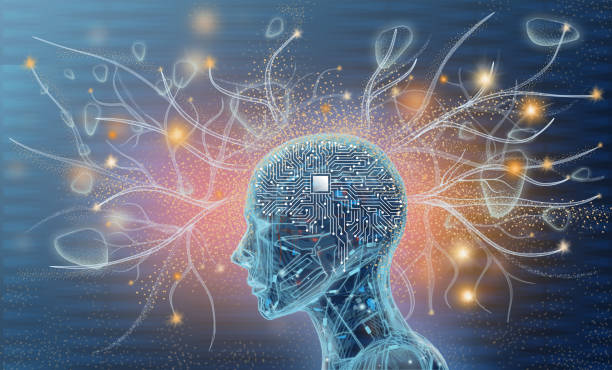A Comprehensive Look at the World of AI Robots
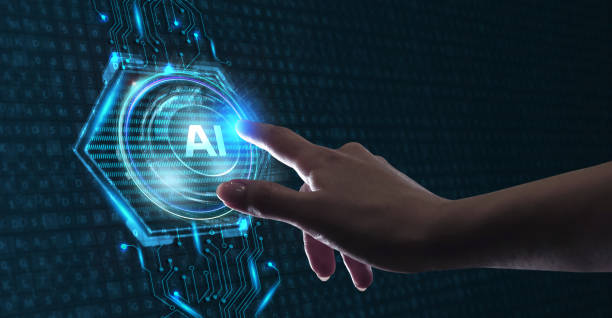
In recent years, the term #AI_Robot has been frequently heard in our news, articles, and even daily conversations.
This emerging phenomenon, once confined to science fiction, has now become one of the #Unmistakable_Realities of our lives.
From intelligent voice assistants to self-driving cars and advanced systems in various industries, the #Presence_of_Smart_Robots is visible everywhere.
But exactly what is an AI robot and how does it work? This concept refers to machines and systems capable of performing tasks that typically require human intelligence.
These tasks include learning, problem-solving, language comprehension, pattern recognition, and even decision-making.
By utilizing complex algorithms and vast amounts of data, these robots develop their cognitive abilities and improve over time in performing their assigned tasks.
The ultimate goal of AI robot development is to create systems that can operate autonomously in complex and dynamic environments and, ultimately, make human life easier and more efficient in various dimensions.
This article is an attempt to delve deeper into this remarkable phenomenon and examine its various aspects from different perspectives.
We will continue by exploring the history, underlying technologies, applications, and challenges facing this technology to provide a comprehensive picture of this new world.
Losing potential customers due to an unprofessional website? Rasaweb is your answer! With our specialized corporate website design services:
✅ Enhance your business’s credibility and standing
✅ Experience more targeted customer acquisition
⚡ Act now to receive a free consultation!
The Evolution of AI Robots from Past to Present
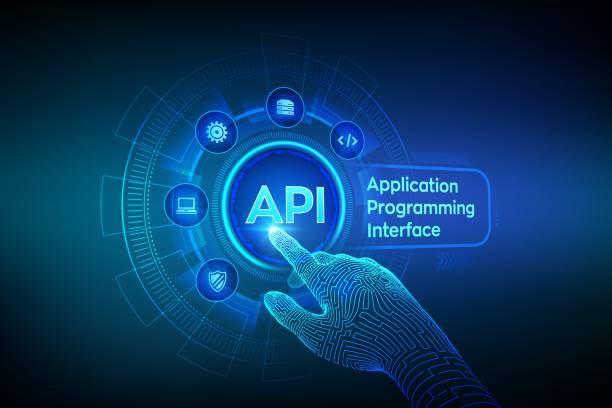
The journey of the AI robot from idea to reality has been long and arduous.
The roots of this concept can be found in ancient myths and stories about intelligent mechanical beings.
But the scientific spark for this field was ignited in the mid-20th century, with the advent of computers and the efforts of scientists like Alan Turing and John McCarthy.
The 1950s and 1960s saw the first artificial intelligence programs capable of solving simple mathematical problems or playing chess.
At that time, expectations were very high, but hardware limitations and a lack of sufficient data led to periods of disappointment, known as “AI winters”.
However, researchers did not give up and continued to develop new algorithms and theories.
The 1980s saw the emergence of expert systems that stored specialized knowledge.
But the real turning point came in the 21st century, with breathtaking advancements in computer processing power and access to unprecedented volumes of Big Data.
The emergence of machine learning and especially deep learning enabled the training of highly complex models that could discover hidden patterns in data and perform tasks such as face recognition or language translation with unprecedented accuracy.
These advancements paved the way for the development of the new generation of AI robots that we see today; robots that are not only capable of performing repetitive tasks but can also learn, adapt, and even outperform humans in some areas.
This evolution demonstrates the enormous and growing potential of this technology.
Architecture and Advanced Technologies in AI Robots
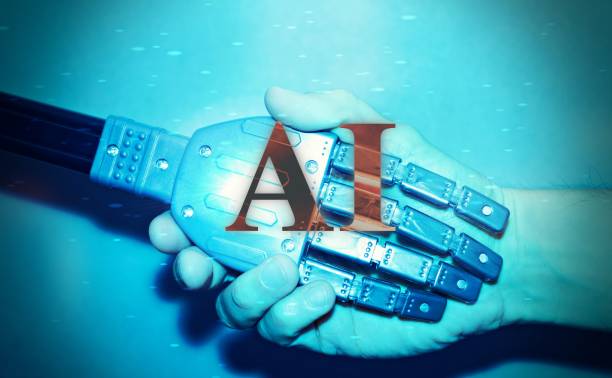
The beating heart of every AI robot is a set of complex technologies and algorithms that enable it to process information, learn from experiences, and make decisions.
Understanding how these technologies work is essential for anyone interested in this field.
One of the most important pillars of modern Artificial Intelligence is “Machine Learning,” which allows systems to learn from data without explicit programming.
A subfield of machine learning called “Deep Learning,” inspired by the structure of the human brain and using multi-layered artificial neural networks, has shown remarkable capabilities in recognizing patterns in images, sounds, and texts.
For example, an AI robot designed to identify faces is trained using thousands of face images to recognize key features.
Natural Language Processing (NLP) is another technology that allows AI robots to understand, interpret, and even generate human language.
This technology is used in voice assistants, chatbots, and machine translation systems.
Computer Vision (CV) also enables robots to “see” and analyze their surroundings through cameras; this includes recognizing objects, people, and movements, which is vital in industrial robots, self-driving cars, and surveillance systems.
These technologies are employed in combination within an AI robot to multiply its capabilities.
In fact, the architecture of an AI robot includes layers of data collection, processing, analysis, and finally decision-making and execution, all based on these advanced algorithms.
To better understand these technologies, the table below shows some of their key applications:
| Technology | Brief Description | Key Applications in AI Robot |
|---|---|---|
| Machine Learning (ML) | System’s ability to learn from data without explicit programming. | Recommendation systems, prediction, fraud detection, data classification. |
| Deep Learning (DL) | A subset of ML using multi-layered neural networks. | Image and sound recognition, natural language processing, complex games. |
| Natural Language Processing (NLP) | Ability to understand, interpret, and generate human language. | Voice assistants, chatbots, machine translation, sentiment analysis. |
| Computer Vision (CV) | Ability to understand and interpret images and videos. | Self-driving cars, face recognition, industrial robotics, medicine (disease diagnosis). |
How AI Robots Are Changing Our Lives?
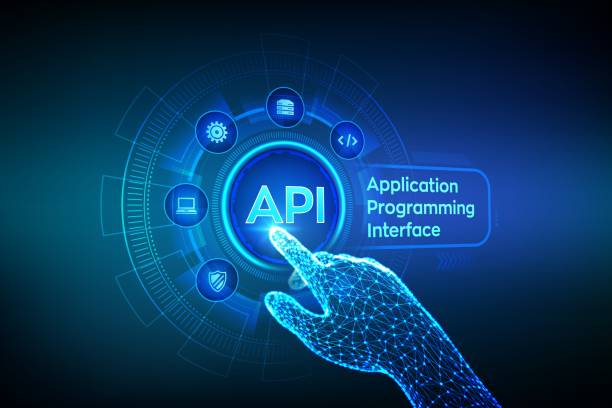
AI robots are no longer confined to laboratories; they are increasingly woven into the fabric of our daily lives, transforming various aspects.
From the moment we wake up until nightfall, the footprint of this technology can be observed around us.
Voice assistants like Siri or Google Assistant are prime examples of AI robots that help us find information, set reminders, or even control smart home devices.
In healthcare, AI robots assist doctors in early disease diagnosis, provide personalized treatment plans, and even act as assistants in complex surgeries.
These advancements not only increase accuracy and speed but also make healthcare more accessible to more people.
In homes, smart home systems controlled by AI adjust the ambient temperature, manage lighting, and ensure home security.
These robots learn residents’ behavioral patterns and automatically create a comfortable and efficient environment.
In transportation, self-driving cars equipped with AI robots are revolutionizing how we travel.
These vehicles, using sensors and complex algorithms, are capable of navigation, obstacle detection, and real-time decision-making for safe driving.
Even in online shopping, AI recommendation engines suggest products to us that are personalized based on our taste and past purchase history.
These developments show that AI robots not only simplify complex tasks but also help us dedicate more time to what truly matters, enhancing our quality of life.
These robots are changing the paradigm of human interaction with technology.
Are you tired of missing business opportunities due to not having a professional corporate website? Worry no more! With Rasaweb’s specialized corporate website design services:
✅ Your brand’s credibility and professionalism will increase.
✅ You will attract more customers and sales leads.
⚡ Get a free consultation right now to start!
Transforming Industries with the Powerful Presence of AI Robots
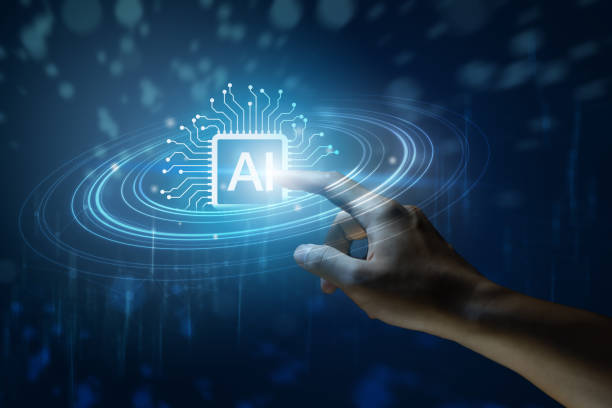
AI robots have broken traditional industry boundaries and brought about a wave of fundamental transformations.
In manufacturing and robotics, AI-powered robots not only perform repetitive and dangerous tasks with unprecedented accuracy and speed but also, with their learning and adaptability capabilities, can optimize production processes and minimize errors.
This leads to increased productivity, reduced costs, and the production of higher-quality products.
In the financial industry, AI robots play a vital role in analyzing market data, detecting fraud patterns, managing risk, and providing personalized investment advice.
Advanced algorithms can review millions of transactions in fractions of a second and identify anomalies, which significantly enhances the security and efficiency of financial systems.
In education, AI robots help create personalized learning experiences.
Intelligent educational systems can identify each student’s learning style, strengths, and weaknesses and tailor educational content to their needs.
These robots can act as private tutors and provide immediate feedback.
In agriculture, AI robots are used in precision agriculture, including monitoring crop health, detecting diseases and pests, and optimizing water and fertilizer consumption.
AI-equipped drones can survey large farms and collect vital data.
Even in the entertainment industry, AI robots have gained a prominent role in content creation, including music production, storytelling, and game design.
These developments show that AI robots not only contribute to improving existing processes but also create entirely new avenues for innovation and economic growth.
This technology is a driving force behind the future economy and the transformation of various industries.
Ethical and Social Challenges in the Development of AI Robots
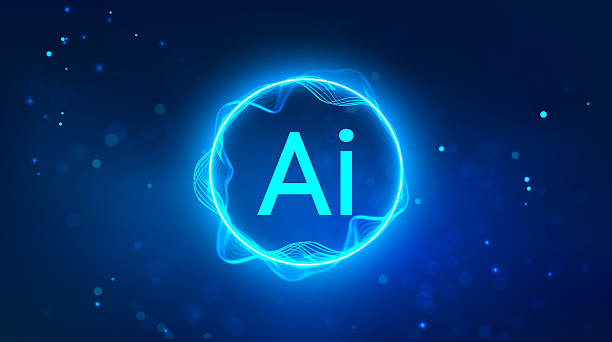
Despite the enormous potential of AI robots to improve life, their development and expansion also bring complex ethical and social challenges that must be carefully considered.
One major concern is the impact of AI on the job market and the potential for replacing human jobs.
While AI robots can increase productivity, there is concern that many routine and repetitive tasks will be performed by machines, leading to widespread unemployment.
This requires rethinking educational systems and creating new job opportunities for humans.
The issue of “Bias” in AI algorithms is also a serious challenge.
AI robots learn from data collected by humans.
If this data contains racial, gender, or social biases, the AI will learn and reproduce these biases, which can lead to discrimination in decision-making, including in hiring, loan approvals, or even judicial systems.
Privacy preservation is also a significant concern.
AI robots require large volumes of personal data to function effectively.
Collecting and using this data without sufficient consent or with inadequate security can lead to privacy breaches and potential misuse.
Transparency and Explainability in AI (Explainable AI – XAI) are also technical and ethical challenges.
How an AI robot arrives at a particular decision is often not understandable to humans.
This “black box” nature can reduce public trust in sensitive areas such as medicine or law.
Finally, the issue of control and autonomy of AI robots is also raised.
Ensuring that intelligent robots always act in the best interest of humanity and remain under human control requires careful design, robust regulations, and continuous oversight to prevent any undesirable scenarios.
New Horizons and Future Advancements of AI Robots

The future of AI robots appears brighter and more exciting than ever.
Researchers are working on the next generation of this technology, which will be capable of demonstrating Artificial General Intelligence (AGI); that is, intelligence that performs as well as or better than humans in any cognitive task.
While achieving AGI is still some way off, advancements in this field are promising.
One key area of progress is Cognitive Robotics, which enables robots not only to perform physical tasks but also to understand their environment, interact with humans, and even recognize emotions.
These robots could be used in caring for the elderly, educating children, or even as emotional companions in the future.
The combination of AI with biotechnology and materials science also creates new fields.
Imagine microscopic robots (nanobots) moving within the human body to detect and treat diseases at the cellular level, or materials that can self-repair and respond intelligently to environmental stimuli.
On the other hand, the development of Explainable AI (XAI) means that intelligent systems will be able to explain their decision-making process to humans, which will increase trust and transparency in sensitive applications.
Furthermore, Federated Learning enables AI models to learn from distributed data on various devices without needing to collect central data, ensuring privacy.
These advancements indicate a vision where AI robots will integrate into our lives in more diverse forms and with more astonishing capabilities, continuously pushing the boundaries of what machines can do.
To better understand the differences between generations of AI, the following table can be helpful:
| AI Generation | Key Capabilities | Examples | Current Status / Prediction |
|---|---|---|---|
| Artificial Narrow Intelligence (ANI) | Specialized in a specific task, without true understanding. | Voice assistants, recommendation systems, face recognition. | Currently available and expanding. |
| Artificial General Intelligence (AGI) | Ability to understand, learn, and perform any human intellectual task. | Robot with full cognitive and emotional capabilities (fiction). | Subject of research and development, in the more distant future. |
| Artificial Superintelligence (ASI) | Intelligence surpassing that of all humans in all aspects. | A system that can improve itself and generate new knowledge. | Currently only a theoretical concept. |
How to Become an Expert in Robotics and Artificial Intelligence?
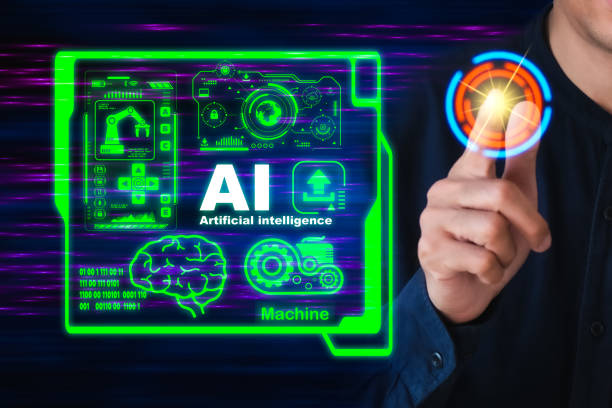
Given the rapid growth and widespread penetration of AI robots into all aspects of life, the demand for specialists in this field has sharply increased.
If you are looking to enter this exciting field, there are several paths before you.
The first step is strengthening the foundation of mathematics and computer science.
A strong understanding of linear algebra, calculus, probability and statistics, as well as programming principles (especially Python) is essential for entering this field.
Many reputable universities worldwide offer specialized programs in artificial intelligence, machine learning, robotics, and data science.
Obtaining bachelor’s and master’s degrees in these fields can provide you with a strong scientific foundation.
In addition to academic education, online courses and educational platforms also play an important role.
Websites like Coursera, edX, Udacity, and Kaggle offer many specialized courses in machine learning, deep learning, natural language processing, and computer vision, taught by prominent university professors and industry experts.
Participating in practical projects and taking part in programming competitions (like Kaggle) also helps you apply your theoretical skills practically and gain valuable experience.
Also, staying up-to-date with the latest research and advancements in this field is vital.
Studying scientific papers, following specialized conferences and seminars, and joining online AI communities will keep you informed of new developments.
Finally, soft skills such as problem-solving, critical thinking, and teamwork ability are also very important for success in this field.
Developing a complex AI robot often requires interdisciplinary collaboration, and these skills can help you play an effective role in development teams.
Is your company’s website as professional and trustworthy as it should be? Don’t worry anymore! With Rasaweb’s specialized corporate website design services, create an online presence that reflects your credibility and attracts more customers.
✅ Build a powerful and professional image for your brand
✅ Convert visitors into real customers
⚡ Get a free consultation right now to start!
AI Robots; From Myth to Reality
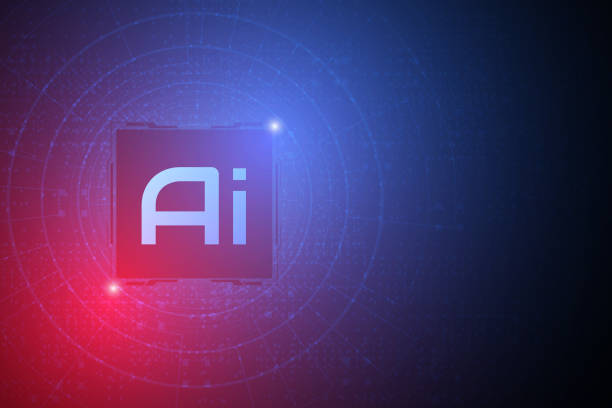
The general perception of AI robots is often influenced by science fiction films and novels, where robots are depicted either as saviors of humanity or as threats that will soon conquer the world.
These perceptions, while fascinating, often differ fundamentally from the current reality and practical advancements in this field.
One of the most common myths relates to Artificial General Intelligence (AGI) or even Artificial Superintelligence (ASI), which is capable of self-awareness, understanding emotions, and even planning to replace the human race.
In reality, today’s AI, which we call Artificial Narrow Intelligence (ANI), excels only in one or a limited set of tasks and has no self-awareness or intentions beyond its programming.
Chatbots can converse, but they have no real understanding of what they are saying.
Another myth is that AI robots can completely replace humans.
While automation affects some repetitive jobs, the main goal of AI is to augment human capabilities, not to completely replace them.
In many cases, AI acts as a powerful tool to increase productivity, reduce errors, and enable tasks that are difficult or impossible for humans.
Human-machine collaboration will shape the future of work.
Also, the idea that AI is always error-free and completely objective is another myth.
As mentioned earlier, AI learns from data and can reflect biases present in that data.
Even advanced algorithms can make mistakes or make decisions with unintended consequences.
The reality is that an AI robot is a powerful tool that, like any other technology, requires careful design, responsible implementation, and continuous human oversight.
Understanding the difference between reality and myth is crucial for the optimal and responsible use of this technology.
Conclusion and the Future Outlook of Humans and AI Robots
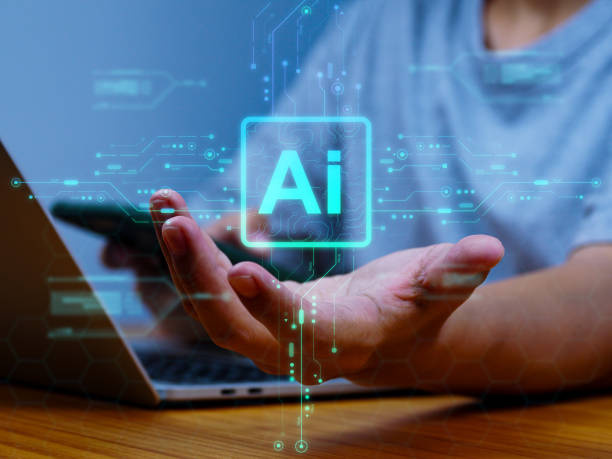
At the end of this comprehensive review, it is clear that AI robots are not just a passing phenomenon, but a driving force that is redefining the boundaries of possibility in our world.
From its humble beginnings to its current complexities, this technology has come a long way and is constantly adding to its capabilities.
We have seen how AI robots, through machine learning, deep learning, natural language processing, and computer vision, have become capable of performing tasks that were once only in the realm of imagination.
The impact of this technology on daily life, from smart homes to healthcare, as well as its profound transformation across various industries, from manufacturing to agriculture, demonstrates its invaluable importance.
However, the path ahead is not without challenges.
Ethical concerns regarding privacy, algorithmic bias, and impact on the job market are issues that require a responsible approach and the development of appropriate legal frameworks.
The future of AI robots depends on continuous collaboration between scientists, policymakers, and society to ensure that this technology is used for the good of humanity.
The future outlook indicates a deeper integration of AI robots into our daily lives, with advancements in AGI, cognitive robotics, and explainable AI.
These advancements not only increase productivity but also provide new opportunities for creativity, discovery, and solving complex global problems.
Ultimately, the future that AI robots envision for us is one where machines and humans work in harmony, each bringing their strengths to solve humanity’s greatest challenges and achieve new horizons of knowledge and prosperity.
This journey has just begun and promises a smarter and more efficient world for all.
Frequently Asked Questions
| Question | Answer |
|---|---|
| What is an AI robot? | It is a robot that uses artificial intelligence capabilities to understand its environment, reason, learn, and make decisions to perform complex tasks independently. |
| What is the main difference between a regular robot and an AI robot? | AI robots can learn and adapt to their environment, while regular robots typically operate based on fixed, predetermined programming. |
| In what areas are AI robots used? | In areas such as industry (production lines), medicine (robotic surgeries), services (customer support, smart vacuum cleaners), exploration (space and underwater), and entertainment. |
| How do AI robots learn? | They acquire new skills through Machine Learning and Deep Learning algorithms, by analyzing large data sets and identifying patterns. |
| Can AI robots have emotions? | Currently, no. They can identify or simulate emotions, but they do not experience emotions genuinely like humans. |
| What are the main advantages of using AI robots? | Increased productivity, reduced human error, performance of dangerous or repetitive tasks, and provision of innovative and efficient services. |
| What challenges exist in the development of AI robots? | The need for abundant and quality data, algorithmic complexity, ethical issues, cybersecurity, and high research and development costs. |
| Are AI robots dangerous to humans? | No, if safe design principles and ethical regulations are followed. Concerns are more related to social and economic impacts, such as changes in the job market. |
| What is an example of an AI robot in daily life? | Smart robotic vacuum cleaners (like Roomba) that autonomously map and clean homes, or smart voice assistants (like Siri and Alexa). |
| How is the future of AI robots predicted? | They are expected to become smarter, more autonomous, and capable of more complex interactions with humans, playing a more significant role in industry, medicine, transportation, and daily life. |
And other services of Rasaweb Advertising Agency in the field of advertising
Intelligent Custom Software: A blend of creativity and technology to increase click-through rates using real data.
Intelligent Custom Software: A fast and efficient solution for improving SEO ranking with a focus on proprietary programming.
Intelligent Link Building: An innovative service for increasing user engagement through intelligent data analysis.
Intelligent Website Development: A blend of creativity and technology for campaign management using SEO-driven content strategy.
Intelligent Content Strategy: A blend of creativity and technology to increase website traffic through Google Ads management.
And over hundreds of other services in the field of internet advertising, advertising consultation, and organizational solutions
Internet Advertising | Advertising Strategy | Advertorials
Sources
Artificial Intelligence and Robots Serving Humanity on Zoomit
Digiato Article: The AI Revolution and Robots
IRNA: The Impact of Artificial Intelligence on the Future of Robots
ISNA: The Great AI Revolution; Robots Serving Humanity
? Are you ready to transform your business in the digital world? Rasaweb Afarin Digital Marketing Agency, with a specialized team and an innovative approach, offers comprehensive and effective solutions for your powerful online presence.
From website design with modern user interface and professional SEO to intelligent social media management and targeted advertising campaigns, we provide everything you need to shine online. With Rasaweb Afarin, take a big step towards lasting success.
📍 Tehran, Mirdamad Street, next to Bank Markazi, Kazeroun Jonoubi Alley, Ramin Alley, No. 6


